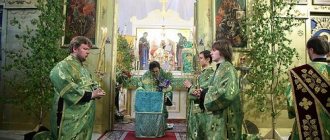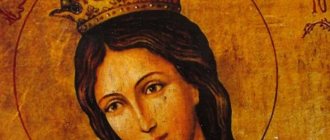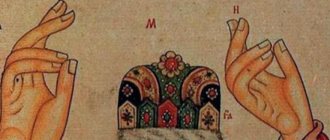One of Jesus' most popular parables is the parable of the tares (weeds). It has a deep meaning. In it, Jesus teaches an important lesson that needs to be learned not only by believers, but by every person.
Like most agricultural-based visual stories of Jesus, this story offers many practical life applications. In this article we will discuss the symbolism of the parable, where else in the Bible it talks about wheat and tares (or weeds), and why we should know this parable.
What is the meaning of this parable?
The field represents the church. In the parable, Jesus calls this the Kingdom of Heaven. And in this field God (the owner or farmer) sows good seed. Good seeds symbolize Christians who have a personal relationship with God and through the process of sanctification seek to become closer and more like Jesus. However, the enemy appears on the field. As with most things in Scripture, the enemy is the devil. He seeks to sow discord in the church and plants weeds or tares.
These weeds and tares represent various temptations, problems, and people who have evil thoughts and actions. They end up tempting and harming the spiritual ways of the good seed (good, spiritual people), but God gives them a chance and they can repent throughout their lives until death (harvest).
The world's first flying car with folding wings will debut in 2022
A beautiful wicker basket made from old bags: it looks great in the interior
In the program “The Stars Aligned,” Skulkina told how she behaves outside the cameras
The servants, most likely angels (but could also represent believers), ask if they can pull out the tares, but Jesus tells them to wait until the harvest. Since the weeds have taken root in the wheat fields, if the servants pull them out too early, they risk damaging the wheat beyond repair due to their intertwined roots. Thus, the servants continue to water and tend both plants equally until it is time to harvest.
The harvest here symbolizes the end of the world or the end of times. It can also mean the end of a person's life. In any case, at the end of life, whether caused by death or something else, it will be known which status you belong to (wheat or tares). Those who belong to the wheat will have an eternal place in the barn in heaven. As for the tares, they receive an eternal place in fire, in hell.
Many people, when they first hear about this parable, ask the question: “How can you tell the wheat from the weeds?” If you live in the Western Hemisphere, for example, weeds look like spiky green plants and wheat looks like golden brown, long plants, but in Middle Eastern climates, tares look almost the same as wheat before harvest.
An Italian social worker portrays society truthfully in her illustrations
Why do most Russians prefer apartments to hotels when traveling?
What to expect if tea is accidentally spilled (on the floor, on a table or on a person)
Yes, indeed, in life it is difficult to distinguish between a good and a bad person, but we must also realize that there are no bad people. After all, a person becomes spiritual only when there is a lot of negativity in his life. Even if he was initially immoral, he can change his worldview at any moment and become a spiritual person. Therefore, “judge not, lest ye be judged.”
Parable of the Wheat and Tares
The parable of the sower and the seed was about how people receive the Word of God differently and how that word affects people differently. In the next parable of the wheat and the tares, Christ says that in the fourth part of the seed that fell on the good soil, the enemy of human salvation does everything possible to spoil what grows on this good soil. The parable of the wheat and tares is extremely relevant for our days, when people wonder about the origin of evil in the world, and are perplexed about the temptations, schisms and apostasies that they encounter in the Church itself. Where to look for the origins of church temptations? What is their reason? Finally, who is their inspiration? We will get answers to these and other related questions in the parable of the wheat and the tares. This is how the Evangelist Matthew presents this parable:
“The kingdom of heaven is like a man who sowed good seed in his field; while the people were sleeping, his enemy came and sowed tares among the wheat and left; When the greenery sprang up and the fruit appeared, then the tares also appeared. Having arrived, the servants of the householder said to him: Master! did you not sow good seed in your field? where do the tares come from? He said to them, “The enemy of man has done this.” And the slaves said to him: Do you want us to go and choose them? But he said to them: no, so that when you choose the tares, you do not pull up the wheat along with them, leave both to grow together until the harvest; and at the time of harvest I will say to the reapers, Gather first the tares and bind them in bundles to burn them, but put the wheat into my barn” (Matthew 13:25-30).
Having told this parable, Christ explains to the apostles and to us that “he who sowed the good seed” is the Son of Man, that is, He Himself; “His enemy” is the devil, the sower of tares; “field” – the world over which His universal Church will spread; “good seed” - the sons of the Kingdom, the children of the Church, in whom the gracious seed of the word of God took root, penetrated into the heart, and made them God’s wheat, ready to be gathered into the heavenly granary, that is, for the kingdom of God; “tares” are the sons of the evil one, that is, all kinds of false teachers, seducers, through whom Satan does his evil work.
The Fathers of the Church teach that the devil opposes Christ in everything. “After the prophets,” says John Chrysostom, “false prophets appear, after the apostles - false apostles, after Christ the Antichrist will appear.” Christ calls people to the saving truth, but the devil through his servants, i.e. false teachers and seducers, sows disastrous lies and delusions in the minds of people, and sows various vices in their hearts, embellishing all this with semblances of truth and goodness. For this reason, Christ calls such people tares, who in appearance resemble wheat. “The devil,” writes St. John Chrysostom - until he sees what to fake, he doesn’t start anything, he doesn’t even know how to get down to business. Therefore, now, having already noticed that he could not steal, nor choke, nor burn what was sown and took root, he invents another kind of deception, namely, he sows his own seeds.”
“The devil sows tares,” says the Lord, “to sleeping people.” In other words, the devil sows his weeds secretly, unnoticed, when the guards assigned to the field, that is, the shepherds of the Church, are not careful enough, when the believers themselves live carelessly, listening too trustingly to impostors and false teachers. Metropolitan Philaret of Moscow writes about it this way: “People sleep spiritually when they carelessly close the eyes of the mind and do not want to look at the light of the truth of the Gospel, when, like those who dream in a dream, they do not control their thoughts and do not curb their desires. They sleep, and the enemy sneaks in the darkness of oblivion about God and His law and sows his tares.” Christ, of course, knows about this and therefore calls His followers to be spiritually awake, to be constantly on guard. Let us turn again to John Chrysostom: “But how, you say, is it possible to remain without sleep? Without natural sleep it is impossible, but without voluntary sleep it is possible. That is why Paul said: watch, stand firm in the faith (1 Cor. 16:13). In the subsequent words of the parable, “when the greenery sprang up and the fruit appeared, then the tares also appeared,” the Lord accurately describes the behavior of heretics: first they cover themselves, but when someone enters into conversation with them, then they pour out their poison. Look at the wickedness of the devil. He did not sow before because there was nothing to destroy. But when everything has already been sown, he also sows in order to spoil what has cost the farmer much work. The devil has revealed such strong enmity in everything against Christ!”
The owner sowed good fruit, but at night the enemy sowed tares there. When the first shoots appeared, he called the workers and showed them that the tares grew along with the wheat. Seeing something wrong in the field, the servants asked the master: “How could this be, since you sowed good seed?” The householder's servants offer to pull out the tares so that only healthy wheat can grow. The owner decisively rejected their offer, explaining that by pulling up the tares, you could damage the wheat, because the tares are very similar to wheat. After all, you can confuse and pull out an ear of wheat along with the tares, since the tares and wheat grow side by side, together, the roots are intertwined and it can happen that when you pull out the tares, you damage the root of the ear of wheat, and it will die.
This detail in the parable of the wheat and tares is extremely important and relevant. In the world we see a lot of lawlessness and various outrages. And not only in the outside world, but also inside the church fence, not everything is fine. Often, when they see the outrageous actions of evil, immoral people, they say: “Lord! Why don’t You punish the wicked now? Why do You give them the opportunity to enjoy all the blessings of the world? Why do they crowd and oppress the good?” Christ answers all these questions in a parable: “Let both grow together until the harvest; the time of harvest will come, i.e. the day of the Last Judgment, and I will say to the reapers, My angels: Gather up first the tares, to burn them; And they will gather the workers of iniquity, and throw them into the fiery furnace; there will be weeping and gnashing of teeth. And put the wheat into My barn; then the righteous will shine like the sun in the kingdom of their Father” (Matthew 13: 36–43).
Many children of the Church, imagining that they are zealous for the truth, for the purity of the Church, call for uprooting the tares. If you begin to zealously destroy all evil within the Church, you may, without discerning it, pull out an ear of wheat instead of chaff and harm yourself. The Lord resolutely prohibits this method of combating evil, for no one except God, the Knower of the Heart, can accurately distinguish a hypocrite from a righteous one. In addition, many of the sinners can still change, repent and become righteous. St. Augustine says about this: “Many are corrected, like Peter; many are tolerant, like Judas; many are not convicted until the coming of the Lord, who will illuminate what is hidden in darkness and reveal the thoughts of the heart.”
Indeed, if we turn to the lives of the saints, we will find many righteous people who experienced falls during their lives. At the moment of the fall one might take them for tares. The Fathers teach that the presence of temptations in the world, the deeds of the evil one, cleanse the soul, help it see its weaknesses more clearly, feel its guilt more deeply, and little by little weaken the forces of sin within itself. Gold is purified from impurities by fire. The mixing of good and evil people in the world provides thousands of opportunities for good people to improve in goodness, to acquire patience, meekness, humility, gentleness, and love. The life of the righteous on earth is closely connected with the life of sinners and ties of kinship, and the similarity of the disposition of the soul, and external circumstances, so that the shock in the fate of some is not without shock in the lives of others. For example, an unworthy father, a drunkard or a libertine, may carefully raise his godly children; the well-being of honest workers may be in the hands of a selfish and rude owner; an unbelieving ruler may turn out to be a wise and useful legislator for citizens. If the Lord God indiscriminately punished all sinners, then the entire order of life on earth would be disrupted.
Christ does not want the tares that are next to the wheat to be destroyed in the church fence also because He wants to teach us patience and show His mercy to sinners. St. John Chrysostom says that this does not mean that the Lord does not forbid stopping false teachers. We need to fight them, but fight them with worthy, evangelical methods. But in no case should we resort to violence in this struggle, as, unfortunately, sometimes happened in church history. The Holy Fathers warn against excessive zeal, saying: “Jealousy, which wants to conquer all evil, is itself a great evil, for it can bring a lot of harm.” The conscience of a Christian should not burn with the evil that he sees. He is called to tame the evil in himself.
Metropolitan Philaret (Voznesensky) speaks well about the fight against evil: “The Lord said: I say to you: do not resist evil! Essentially, this is not a coincidence of Russian and Slavic texts. “Evil” is not evil as such, but evil, i.e. to an evil person. In Russian it reads: “I tell you: do not resist evil!” But only. If you want to fight evil, then do not address it directly at the person who does the evil, but at the evil that he causes. And do not try to tear this man out of the church fence, as the servants wanted to tear out the tares, but try to convince him, to explain to him the incorrectness of his concepts. As Father John of Kronstadt said: “They are sinners, but love and have pity on sinners!” Unreasonable jealousy seeks to destroy everything that causes evil. The Apostle Paul spoke about it that this zeal is not according to reason, i.e. unreasonable. This jealousy itself can turn out to be a great evil, because it can cause a lot of harm, confusion, and temptation among the church.”
Christ says: “Leave both to grow together until the harvest,” and “the harvest is the end of the age.” St. Augustine explains: “So, until the end of the century, the Church will combine within itself the good and the evil, without harm to the good. Even if there are tares in the Church, this does not hinder our faith and love; seeing tares in the Church, we must not fall away from it. We must only try to be wheat ourselves, so that when the wheat is gathered into the Lord’s barns, our labors and cares do not remain fruitless.” Blessed Theophylact, Bishop of Bulgaria, in this connection notes: “If Matthew (before his conversion, a tax collector hated by his compatriots - V.P.) had been plucked from this life, when he was among the tares, then he would have perished with him and the wheat of his words would subsequently vegetate because of him. Likewise, both Paul and the thief, when they were tares, were not destroyed, so that their virtue would later grow.”
Christ does not want the death of sinners, but wants them to understand the truth and be saved (1 Cor. 11:19). He, with the warmth of His goodness, the life-giving rays of His love, wants to soften the hardness of their hearts and awaken new life in them (Rom. 2: 2-6). He sets them an example of the piety of His chosen ones, as a denunciation of their sinful life. Let us remember the appeal of the persecutor of Christians, Saul. But was Saul the only one who became Paul? How many pagans turned into ardent confessors of the faith when they looked at the self-sacrifice and firmness of the martyrs. And not only in ancient times. And in the twentieth century, how many people were inspired by the example of the steadfastness of the new martyrs and confessors of Russia!
The Holy Fathers liken the Church of Christ to Noah’s Ark, in which, along with the clean ones, there were also unclean animals. The church is also likened to a net, into which various reptiles fall along with the fish. Different people: both sinners and righteous people make up the Church, the Body of Christ. There are people in it who have reached the heights of spiritual perfection, and there are spiritual babies. Newcomers must be protected, and not seduced and pushed away as weak members of the Church by “zeal not according to reason.”
Where does the Bible talk about tares (or weeds)?
The first occurrence of weeds is described in Genesis. Because Adam and Eve sinned, the very ground they walked on was cursed. Every weed or parasitic plant that they and we encounter is a consequence of their disobedience, since it makes our work in the fields more difficult.
Knowing this connection with weeds and sin, Jesus included tares in his parable. In addition, the word “weeds” appears in the Gospel of Matthew: “The workers always burned the weeds in the fire.”
field weed
This is essentially what this Eurasian flowering plant is - chaff, of the Poaceae family. It mainly grows in meadows and fields, sometimes it can be seen located along roads, sometimes on railway embankments. Some of its species are used as food for pets and as lawn grass.
The scientific Latin name for tares is lolium, it came to us from Ancient Rome. Virgil called this evil weed with this word. The term “tares” came into Russian from Church Slavonic, where it meant a weed. At the same time, in the Old Russian language there was a noun “polovel”, which had the same meaning.
In many languages this plant is called “rye grass”. In English it sounds like Ryegrass, in Finnish it sounds like Raiheinä. A similar name is also found in Icelandic and Dutch. In Russian-language literature you can find a similar name for the described genus - “ryegrass” or “raygrass”.
To better understand what chaff means, you should move on to a direct description of the plant.
Biological characteristics
Representatives of the tares genus are both annual and perennial herbs. Their root system is defined as fibrous, they have elastic shoots. The leaves are flat, linear, dark green in color. Their spikelets-inflorescences are up to 15 cm long. The spikelets are loose, sessile, arranged in longitudinal rows one at a time. They grow up to 8-16 mm in length, each with from three to twenty flowers and two stigmas.
During the flowering period, the inflorescences are densely covered with pollen. They are pollinated by the wind. The pollen from this plant can cause hay fever. Its fruit is a caryopsis, a dry single-seeded fruit common to cereals. Seeds are dispersed by water or wind.
There are two types - multi-flowered and perennial chaff. Both of them are valuable fodder grains. The decorative value of the plant is low, but some species are planted as lawn grass.
In continuation of the study of what tares are, the use of the lexeme in the Holy Scriptures will be considered.










